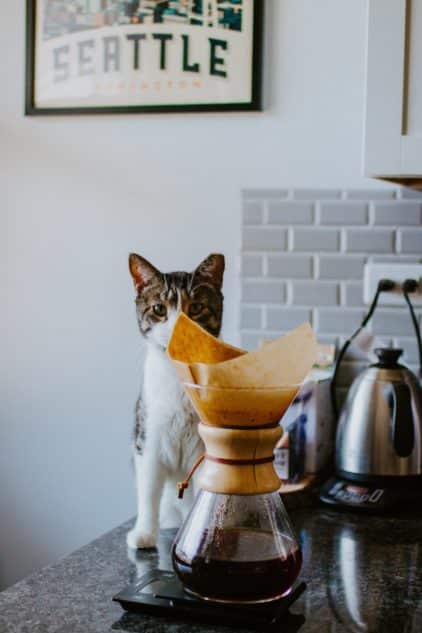Do you enjoy eating lobster? The flavor of seafood will probably attract your cat as well, making you wonder: ‘Can cats eat lobster?’
Feeding your cat seafood would generally not be a problem, but some felines have a sensitive stomach. Planning a seafood dinner can bring questions such as:
- Can cats eat lobster shells?
- Can cats eat lobster tails?
- Can cats eat crab shells?
- Can cats eat fish roe?
Keep on reading to find out if your cat is invited or not to your luxury feast!
A few words about lobsters
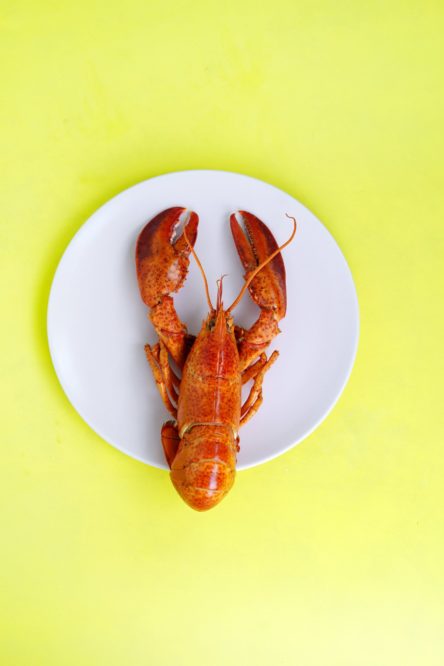
Before finding out more about lobsters and cats, a little bit of history.
Did you know that lobster was not a fancy food centuries ago? In fact, it was trash.
When the first settlers formed colonies in New England, lobster was fed to prisoners in large quantities. They were so satiated with lobster that jailers were forced to limit the amount of lobster they could offer prisoners. People who ate lobster were from the lower class and relied on it as a subsistence food.
One of the reasons why lobster is so expensive these days is that it needs to be cooked alive. If the lobster is dead, it starts rotting immediately and can make you sick. Its stomach enzymes seep out into the rest of its body and cause the meat to decompose fast.
Lobster turned into a delicacy in the 19th century, when it was canned and people from various states were able to taste it. The demand for fresh lobster increased and so did its price, as shipping lobsters alive was very costly.
After decades of considering lobster a luxury food, its status is about to change again. The increasing concern for preventing animal cruelty is making lobster less popular. Boiling a creature alive just to enjoy its delicious taste is seen by many as cruel and unnecessary.
Lobster nutritional value
Lobster would not have been a staple food for the poor in the 18th century had it not been nutritious.[1]
Humans can do very well on a diet containing large amounts of seafood.
A cup of cooked lobster (145 grams) contains:
- 129 calories
- 25 g of fat
- 0 g of carbohydrate
- 55 g of protein
Other nutrients found in lobster include:
- Copper
- Selenium
- Zinc
- Phosphorus
- Magnesium
- Vitamin B12
- Vitamin E
- Omega-3 fatty acids
- Polyunsaturated fats
Lobster does contain cholesterol, but this is not a problem. Recent studies have shown that it is the saturated fat intake that causes an increase in cholesterol levels. Cholesterol content in foods is not harmful to the body. This is why the polyunsaturated fats in lobster actually decrease your cholesterol levels.
Lobster health benefits
Seafood, including lobster, provides multiple health benefits both to humans and pets:
- Providing omega-3 fatty acids
Omega-3 fatty acids are very important for your health. These nutrients have been studied extensively. Benefits include: reducing anxiety, improving eye health, ensuring brain health, fighting off heart disease, preventing metabolic syndrome, and fighting inflammation.
- Ensuring healthy thyroid function
The selenium found in lobsters helps the thyroid absorb and metabolize hormones.[2]
Increased selenium intake has been linked to a better mood, wellbeing, and better thyroid function.
- Reducing the risk of ADHD
Selenium deficiency in children was found as a possible environmental factor causing ADHD. [3]
Higher consumption of selenium can reduce the risk of ADHD.
- Preventing anemia
Copper deficiency is harmful for multiple reasons, including the fact that it can cause anemia.[4]
Copper enables iron to form red blood cells. When you don’t have enough copper in your body anemia can occur.
- High protein content
The essential amino acids in lobster help your body to build blocks of protein. Protein from lobster is considered of higher quality than protein in red meat, milk, or soy.[5]
High protein foods help you maintain a healthy weight as they boost metabolism and make you feel satiated. This is possible because protein reduces appetite-stimulating hormones and increases the level of hormones that reduce hunger. Foods such as lobster help you control your appetite more easily.
- Possible anti-cancer effects
The selenium and omega-3 fats in lobster may have cancer-fighting effects. Multiple studies have found diets rich in selenium, EPA, and DHA to protect organisms from different types of cancers. These ailments included breast, colorectal, prostate, lung, gastric, liver, and ovarian cancer.[6]
- Boosting immunity
The same selenium found in lobster plays an important role in ensuring the normal functioning of cells. This in its turn ensures healthy immune responses.
Is seafood recommended to cats?
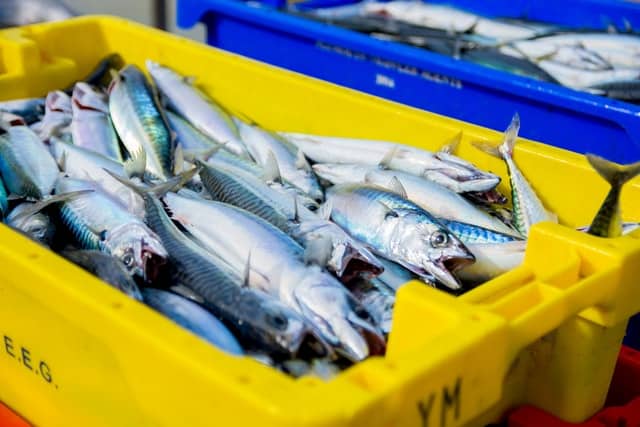
With so many health benefits of lobster, you may be asking ‘Can cats eat lobster?’ And which part of the lobster, only the meat or also the shells?
There are many species that are considered seafood, including bony fishes, crustaceans, mollusks, edible jellyfish, sea turtles and frogs.
Pet owners are usually concerned about the following types of seafood:
- Squid
Squids are cephalopods with eight arms and two tentacles. They contain a variety of beneficial substances, such as vitamins, calcium, iron, zinc, selenium, manganese, and others. They should be offered to cats in moderate amounts. Squid is nutritionally unbalanced and cannot replace a normal feline diet.
- Oysters
These mollusks with hard shells are considered a delicacy in many parts of the world. The phenolic compound in oysters called DHMBA ensures a healthy liver in humans. Just like squid, it is good for cats in small amounts as it cannot replace a healthy cat diet.
- Scallops
These bivalve mollusks are highly appreciated and contain beneficial ingredients like iodine, choline, and phosphorus. They can also be offered to cats in small amounts as they don’t contain all the nutrients felines need.
Scallops, like every other type of seafood, should be offered cooked only. Raw seafood can contain bacteria causing foodborne diseases.
- Fish roe
Fish roe is not recommended to cats because it is raw. This food consists of raw fish eggs, usually processed into a delicious dip. The fat content added to fish roe attracts cats like a magnet, but can you give this delicacy to kitties?
Can cats eat fish roe? The answer is no because this food contains raw eggs. They may contain bacteria that in its turn can cause food poisoning.
Another issue with fish roe and other raw seafood is that it contains an enzyme that destroys thiamine. Thiamine is a crucial B vitamin whose absence can lead to severe neurological problems.
- Seafood shells
Can cats eat lobster shells?
After all, cats are known to enjoy searching through food leftovers. Your kitty may find some shells and try to eat them. Cats are very curious by nature.
Crab and lobster shells contain vitamin B12, which is good for your cat. On the other hand, shells are the hardest part and can choke your pet to death. The best is to avoid shells.
Possible risks associated with eating seafood
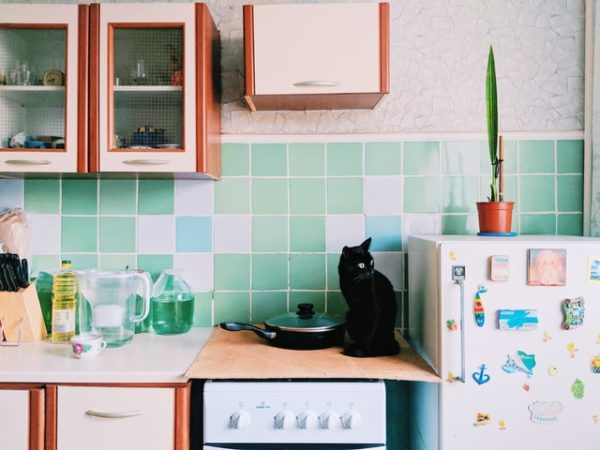
Seafood is generally safe for cats as long as you watch for chocking hazards. However, if you decide to give your cat seafood, there are also precautions you also need to take:
- Preventing allergic reactions
Both humans and animals can be allergic to seafood. Symptoms of allergic reactions are stomach upsets, vomiting, diarrhea, itchiness, and difficulty breathing.
Is your cat trying seafood for the first time? Only feed a small amount and watch for signs of allergic reactions.
- Avoiding raw seafood
Raw lobster, squid, scallops, and other species contain thiaminase, an enzyme that breaks down vitamin B1. This can cause thiamin deficiency, which can be very dangerous to your cat.
The bacteria in raw seafood are another problem, as they can cause food intoxication. Give cooked seafood to your cat to prevent the ingestion of harmful germs.
- Beware of additives and spices
Offering cooked lobsters to your cat is safe as long as they are not added toxic ingredients. Garlic and onions can be found in many seafood dishes, in various forms, including powder. Plants from the Allium family are toxic to cats and dogs and can cause severe anemia.
So, can cats eat lobster?
As you probably have guessed already, yes, they can.
Cats can have cooked lobster in moderate amounts and making sure it is not added harmful ingredients.
What conditions should your cat meet in order to eat lobster safely?
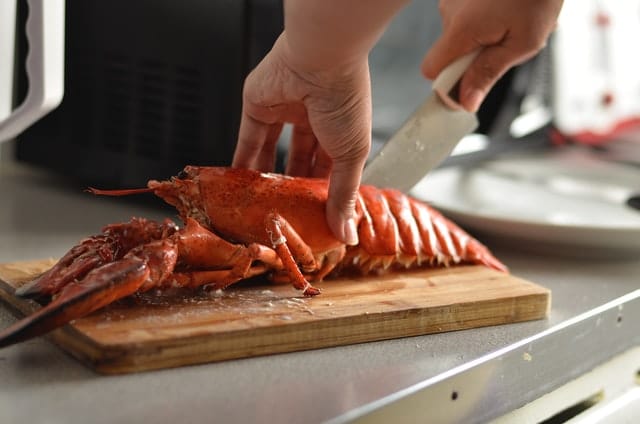
To recap the information above, you can feed your cat lobster as long as the following conditions are met:
- The cat is not allergic to seafood;
- The lobster does not represent a large percentage of its diet;
- It is fresh (cooked alive);
- The lobster has been cooked properly;
- Is not seasoned with harmful ingredients such as garlic and dairy. Garlic is toxic to cats, while dairy can cause digestive upset due to lactose intolerance;
- The cat does not eat the shells, which represents a choking hazard.
Conclusion
Can cats eat lobster? Yes, it is an excellent treat as long as it meets the conditions described above.
It provides your cat with nutrients such as amino acids, omega-3 fatty acids, vitamins, and minerals.
Our recommendation is to have lobster every once in a while, both you and your kitty. Your health will only benefit from this delicacy!
